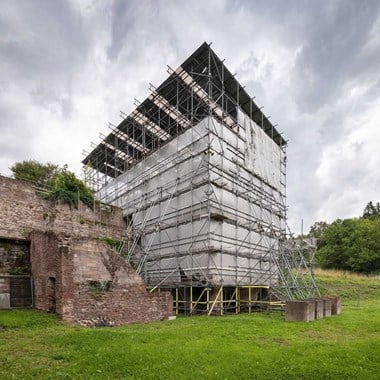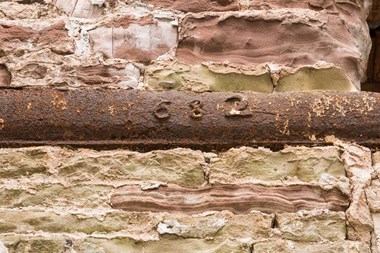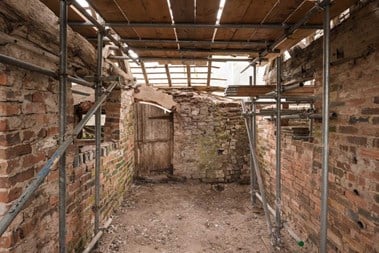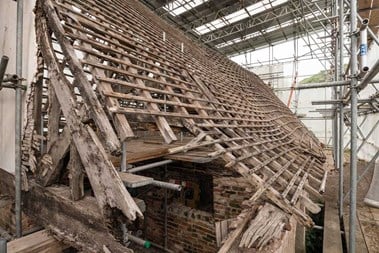Repair grant for Gunns Mill, Forest of Dean, Gloucestershire
Historic England has awarded a grant of £163,812 to the Forest of Dean Buildings Preservation Trust to repair the bridge house at Gunns Mill furnace, one of Britain's most important industrial heritage sites.
The bridge house once protected charcoal and ore from the weather before being loaded into the furnace.
It is the only surviving bridge house for a furnace of this type dating from the late 17th century. The Trust plans to make this part of the building a usable space in the future.
The bridge house roof repairs were carefully planned in late 2023 with advice from architects and structural engineers and a development grant from Historic England.
This will be the third major repair project at Gunns Mill since 2020, when the Trust successfully completed repairs to the mill waterwheel pit. This was followed by urgent structural works to the north-east wall in 2022. Historic England provided grant funding and technical support for both projects.
The architects and engineers have prepared a solution, and we are fundraising for the next steps to be undertaken. This is a major step forward in the journey of this building and would mean that we could remove some of the scaffolding, after over 20 years!
Gunns Mill is considered to be the best-preserved charcoal blast furnace in Britain. It dates from around 1682 when the Forest of Dean was one of the most important centres for iron production in the country, as it had been since the Roman period. It was converted to a papermill in 1743 but had fallen out of use by the 20th century.
The repair works to this rare 17th-century bridge house have been carefully planned to take into account its fragility and structural complexity. It will be great to see work getting under way as a first step towards the building being used again in the future.
Recent repairs
The Forest of Dean Buildings Preservation Trust took on the ownership of Gunns Mill in 2013 and since then has carried out repairs to the structure with support and funding from Historic England.
In 2020, a grant of £84,000 helped fund the repair of the mill waterwheel pit, and in 2022, structural works to stablise the north-east wall were successfully completed with a further grant of £95,000.
Gunns Mill, Forest of Dean
Please click on the gallery images to enlarge.
The history of Gunns Mill
The surviving lower tier of the building is a blast furnace built in 1625 on the site of earlier fulling and corn mills. Fulling, also known as felting, was a process involved in producing woollen cloth.
That furnace was destroyed in the Civil War and was rebuilt by 1682, evidenced by cast iron lintels with cast dates of 1682 and 1683. The charge house roof on the upper tier north side has been dendro-dated from this time. It continued as a blast furnace until 1738.
Local business owner Joseph Lloyd (who died in 1761) gave Gunns Mill a new use in 1741 by converting the building to a paper mill. The upper-tier timber-framed building on the south side probably dates from this phase.
By the late 19th century, the mill was sold into a farming estate and used as a cow shed.
William Parker bought Gunns Mill in 1994 to prevent its conversion to a house. It was added to Historic England’s Heritage at Risk register in 1998, and in 2000, it was given a protective scaffold, which remains in place today. In 2013, William Parker donated the mill to the Forest of Dean Buildings Preservation Trust.
Gunns Mill is protected as a scheduled monument and a Grade II* listed building.











